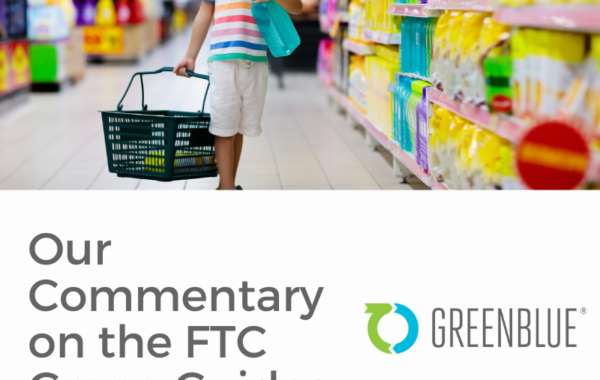November 1, 2019

(a slide from the Essentials of Sourcing Fiber course)
Designing packaging with sustainably sourced fiber provides an excellent opportunity to use a renewable material from responsibly managed forests. By creating a demand for sustainably sourced fiber, companies that use forest products help to ensure that working forests stay forests. Land conversion to other non-forest uses often result in a loss of biodiversity and many of the other important ecosystem services provided by forests, such as carbon sequestration, soil enhancement, and water and air purification. As we reconsider what materials to select for our packaging, especially in an effort to create a more “circular economy,” packaging professionals should consider the advantages provided by sustainability sourced timber.
Our Essentials of Sourcing Fiber course helps companies to ask the right questions when sourcing fiber for their packaging. Learn about the key considerations around the various fiber options and how to support a circular economy for fiber:
1. Remember that sustainable fiber can be from certified, recycled, and/or verified sources
Companies choosing paper products with virgin or recycled content have many options and environmental trade-offs to consider. Recycled paper has well-known environmental benefits, and as a result, the assumption is often made that recycled paper should replace virgin in every instance. This is, however, not possible because:
- There is a finite amount of recovered paper available, making virgin fiber inputs necessary for maintaining paper production;
- The use of recovered fibers in certain paper grades is more efficient than in others; and
- The structural quality of recycled fibers deteriorates over time, meaning that after being recycled three to seven times (depending on product type) fibers become too short and weak to make into new paper.
Companies should consider these realities and identify the most responsible material portfolio for their unique packaging.
Tools such as forest certification, chain-of-custody certification, controlled wood, and certified sourcing can be used to verify the origin, provenance, and environmental profile of paper products.. However, verifying that responsible sourcing is occuring can be a challenge, even in the US. This is largely due to the unique breakdown of forest ownership in the states. Over 50% of fiber in the US originates from private, family forest owners. However, only about 1% of those family forests are currently certified to a credible third-party standard. This creates a large mismatch between the demand for – and supply of- certified fiber. Created in response to this challenge, Forests in Focus is an innovative platform that uses landscape-level analyses of timberland across the US to help users assess risks and identify conservation opportunities where they source.
Taken to scale, responsible sourcing encourages environmentally-sound forestry practices, helps establish sustainable material flows, and preserves valuable resources for future generations.
2. Embrace transparency and reporting
Buyers and sellers of paper products are encouraged to evaluate and publicly report the environmental performance data of the entire supply chain. Reporting enhances accountability, builds trust, and helps to benchmark and track efficiency gains within production flows. Choose a reporting mechanism that includes comprehensive metrics and standardized data gathering methodologies, such as ISO or ASTM International standards, with a purchasing framework that considers life-cycle impacts, including mill-level data for energy and water use, end-of-life options, certified forest management, human health and safety, and other performance indicators.
3. Support effective recovery of fiber
Fiber represents over half (53%) of the material recovered from municipal solid waste streams in the U.S., making recovered paper an important source of revenue that supports the overall recycling system.
Recycling also leads to reduced waste of materials by enabling secondary use and reduced emissions from landfills. At their end-of-life, paper products carry embodied value as well as the cumulative environmental impacts of upstream decisions. Effective recovery, including re-use, preserves embodied value and provides resources for the next generation of paper products. A systems approach to recovery can significantly improve the supply of re-usable paper fiber and bring order and coherence to material flows.
4. Set goals and report your performance, but also invest in real, on-the-ground conservation outcomes
If market forces can align around a shared understanding of the real issues facing forests in a region, the potential for positive impact is immense. Setting goals and reporting environmental performance is essential, but there are also many mechanisms to invest in conservation opportunities that have real, on-the-ground impacts. Forests in Focus is developing pay-for-performance partnerships in which companies can commit to purchasing specific environmental outcomes and only pay for these mitigation projects once those promised outcomes are verified. This approach allows companies to make investments of various sizes while removing the risks from the transaction.
These mitigation projects create unique opportunities to engage with family forest owners, who as a whole contribute greatly to the US fiber supply, but have had little involvement in large-scale sustainability initiatives. For example, in Northern California, companies can pay to accomplish reforestation of forests destroyed by the wildfires by assisting landowners in salvaging and prepping the burned site, replanting, and post-planting maintenance to ensure high survival rates.
In Summary
There are many factors to consider when designing and selecting fiber packaging materials:
- Sourcing from responsibly managed forests keeps forests as forests (and ecosystem services as services), ensuring that packaging is more reliant on renewable resources
- Embracing and promoting transparency in fiber sourcing decision making is important for building trust and tracking progress towards larger sustainability goals
- Designing packaging with end-of-life and recovery strategies is an essential component of the sustainability of your product
- Investing in verified conservation projects can further your sustainability goals, mitigate risks and result in genuine and valuable connections with land owners
Our Essentials of Sourcing Fiber course explores these considerations in further detail, showcasing corporate strategies for marrying recycled and virgin fiber procurement and highlighting ways to communicate sustainable fiber sourcing on-package.
Hewes, Jaketon H.; Butler, Brett J.; Liknes, Greg C.; Nelson, Mark D.; Snyder, Stephanie A. (2014). Map of distribution of six forest ownership types in the conterminous United States. [Scale 1: 10,000,000, 1: 34,000,000.] [PDF]. Res. Map NRS-6. Newtown Square, PA: U.S. Department of Agriculture, Forest Service, Northern Research Station. Retrieved July 31, 2018, from https://www.fs.fed.us/nrs/pubs/rmap/rmap_nrs6.pdf
—-
 The course is part of the Essentials of Sustainable Packaging training program. Courses are available online on-demand with a one-year subscription, and special discounts are available for SPC members.
The course is part of the Essentials of Sustainable Packaging training program. Courses are available online on-demand with a one-year subscription, and special discounts are available for SPC members.





